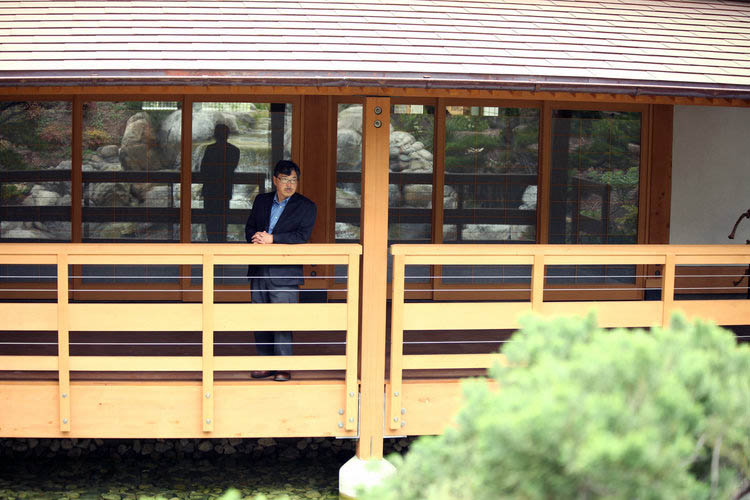Kotaro Nakamura

Kotaro Nakamura is a professor and the former Director of the School of Art + Design. He is a celebrated architect whose current research is diving into the indigenous way of living comfortably without using much energy or water, specifically Norwegian farmhouses, Anasazi Indian Pueblos, and Japanese teahouses. He was one of the first LEED APs in the country and created one of the first LEED Gold projects in San Diego county. Now, he is looking into how to create a model to measure resilience and self-sufficiency. Some of his projects include:
- DMV San Ysidro- LEED Gold
- Japanese Garden Pavilion- LEED Certified
- San Pasqual Academy Housing- LEED Platinum
Sustainability Initiation
When he was going through his undergraduate in environmental engineering, one issue stuck in his mind. “I learned that when they measure pollutants they measure with PPM (parts per million); that’s a relative measurement. For example, when you increase how much water you’re using, the number will go down. All you have to do is just mix it with more water then you comply with any kind of regulation because you are diluting the contaminants even though the amount of pollution is the same”. He notes how the same idea can be applied to sound pollution, light, energy consumption, etc. This fact made him realize the room for error and how he wanted to get involved.
Design Considerations
He stresses the importance of remembering that the industry is still “dollar and cents driven because that is what the private sector understands”. He speaks of his past experience in which this applied, “With the DMV I designed in San Ysidro, the green cost of making it LEED Gold was less than 2% of the entire construction cost. And that’s just the initial cost, if you consider the running cost, the solar panels will continue to save, the toilet will continue to save; my estimate is that it will pay off in 6 years then after that it is all saving”. He wishes that as a university we “incorporate the more indigenous inexpensive ideas to design buildings. One criticism of LEED is in the way they encourage use of tech (pump, fans, AC) I know what happens when those things break down, it's not going to be repaired.”
Positive Messaging
“I have a tendency every time I give a lecture to say everything is falling apart, ice is melting and energy is not reliable anymore. But it shuts everyone down and creates helplessness. The problem is so large and global that everybody thinks there’s nothing we can do”. He spoke with the director of the Birch Aquarium and he was involved in something called the Positive Ocean. “It’s meant to give a positive image of the ocean to the younger generation to promote love of the ocean. When that love is established, they will naturally protect it. It is much more important to create the connection before telling them about the bad news concerning it”. Since this realization, he has incorporated positive messaging in his presentations. For example, when speaking on the Japan Tsunamis, he started to incorporate the images and information about their strong community and their beautiful nature to tell them that “this is worth saving”.
Helpful Reads

He recommends the Philosophy of Sustainable Design by Jason McLennan because it lays the “How-To” basis from a philosophical perspective. He also references Tao Te Ching by Lao Tzu written in China in 400 BC. His favorite quote from it is “when you fill a bowl to its brim, it will spill”. Kotaro cites the meaning as when you do 100% you will waste it, it's better to do 80%. This can be applied to classic examples of commercial fishing, how much you eat for dinner, and other sustainable concepts.
Advice for Students
He says to get involved in organizations that align with your interests. For sustainable design, he points to USGBC, SDGBC, all sorts of conferences, events, and meetups. Many of these organizations are still meeting online. “When you meet with like minded people, you learn a lot and start creating community”.
Kotaro teaches LEED compliance design in ART 453 and says that “sustainable design is an active part of design education”. He also recommends reaching out to Thais Alves, who is teaching sustainable design and construction.
He is happy to engage with anyone who is interested in sustainability. His email is [email protected].
